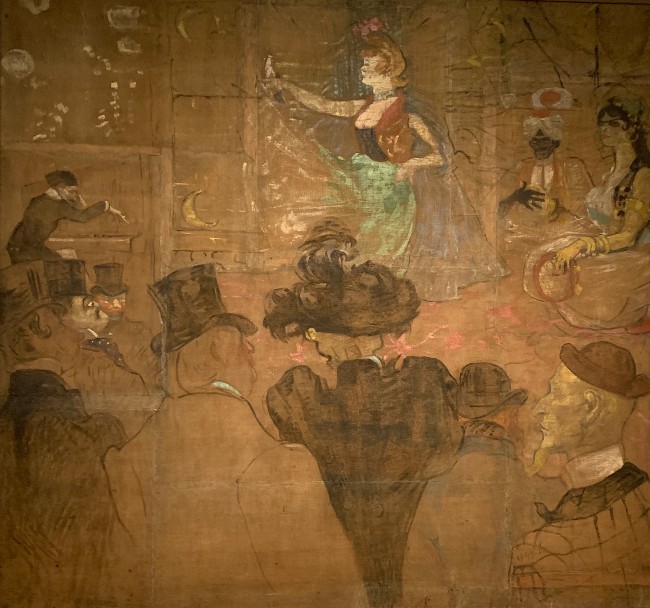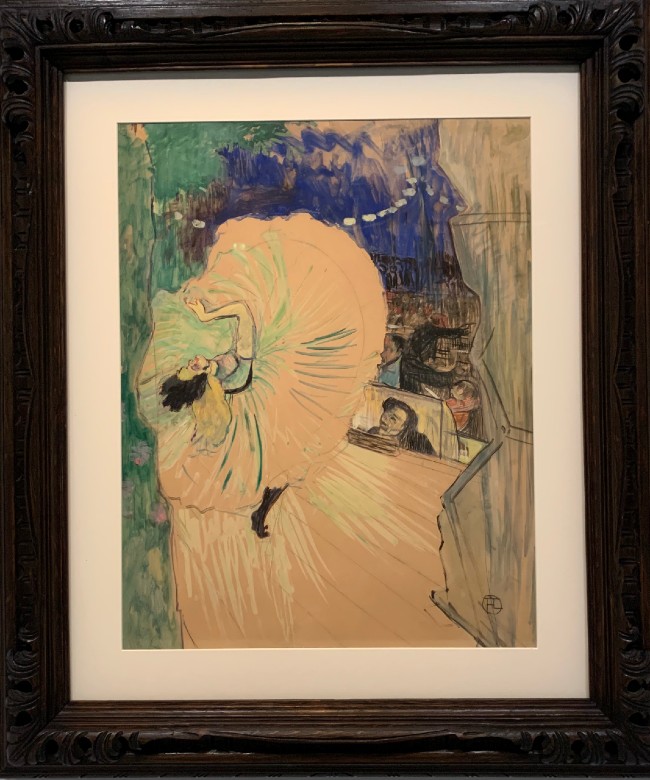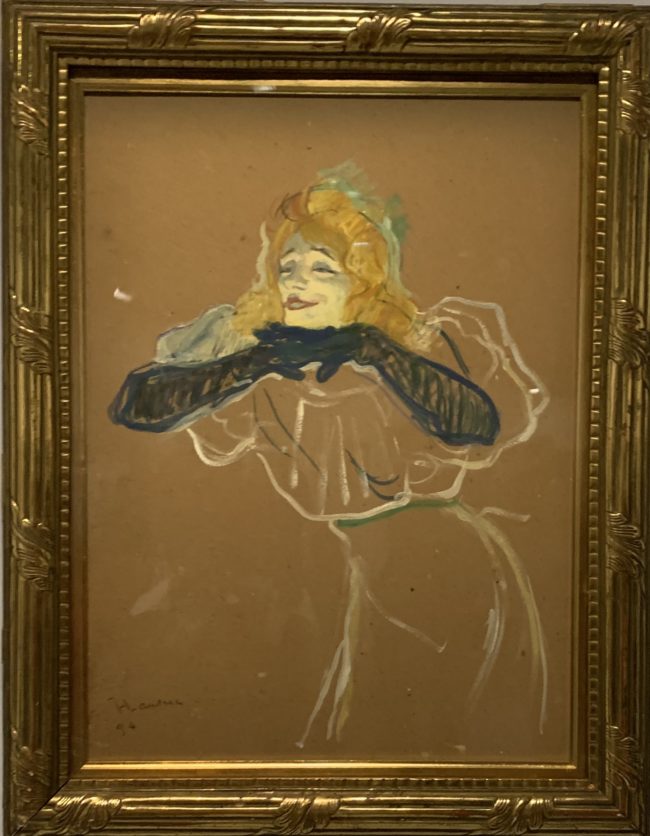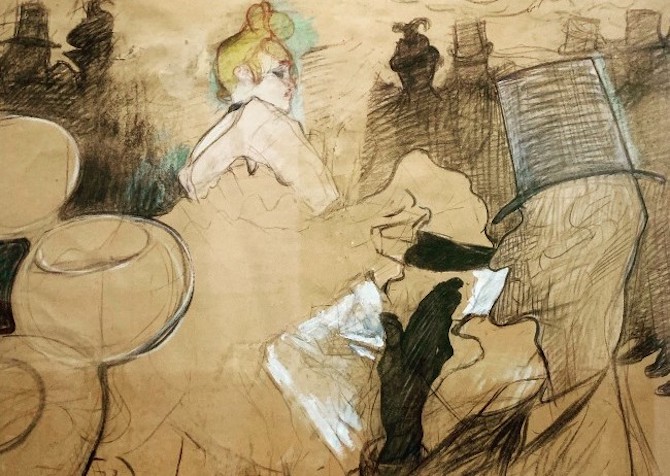La Goulue: The Scandalous Cancan Queen who Inspired Toulouse-Lautrec
- SUBSCRIBE
- ALREADY SUBSCRIBED?
BECOME A BONJOUR PARIS MEMBER
Gain full access to our collection of over 5,000 articles and bring the City of Light into your life. Just 60 USD per year.
Find out why you should become a member here.
Sign in
Fill in your credentials below.
You only have a few weeks to re-discover the modernity of Toulouse-Lautrec in the tribute exhibition that the Grand Palais dedicates to the painter. Despite his noble origins, he was an outcast and felt more at ease in the underworld of actors and prostitutes than the rarefied surroundings which could have been his by birth.
In the Paris of the roaring 1890s, Toulouse-Lautrec loved frequenting the cabaret, in particular the most modern of all, the Moulin Rouge. Relegated today to the status of a classic Paris attraction, the French cancan was at the time a strikingly liberating dance, made famous by stars like La Goulue, immortalized by Toulouse-Lautrec in this advertising poster for the theater.

La Goulue as seen at the exhibit “Toulouse-Lautrec: Résolument Moderne”. Photo: Sarah Bartesaghi Truong
La Goulue, born in Alsace in 1866 as Louise Weber, had inherited a passion for dancing from her mother, a laundress. As soon as her family moved to Clichy, a working-class suburb of Paris, Louise started frequenting ballrooms and cabarets, while working like her mother as a laundress.
At the Moulin de la Galette, in Montmartre, Louise met painters like Auguste Renoir and budding photographers, for whom she started sitting as a model, sometimes in the nude, to complement the meagre takings from her laundering activity.
Her lucky break came in 1885 when she partnered with dancer Jules Étienne Edme Renaudin, better known under his stage name of Valentin le Désossé (Boneless Valentin). They started forming a successful stage duo performing the quadrille, soon dancing at the Moulin Rouge, the temple of French cancan.

La Roue. “Toulouse-Lautrec: Résolument Moderne” exhibit. Photo: Sarah Bartesaghi Truong
The cancan was a scandalous dance, with skirts flying, high kicks and provocative gyrations revealing the frilly underwear of the performers. Initially danced by men as a jest, then by both sexes in popular ballrooms, soon female stage dancers realized the potential of the chahut (literally, racket) to entertain the male audience who frequented the cabarets.
Louise, perfectly at ease in this shady environment, soon became a sassy solo performer. Her contagious joie de vivre, channelled into the cancan, made her the first star of the Moulin Rouge, under the stage name of La Goulue (the glutton). The nickname came from her habit of downing the glasses of patrons she danced for at the balls she frequented, and it was a fitting description also for her thirst for life. Her signature move was the coup de cul (literally, back shot), where she lifted her skirts while turning her back to the audience, to reveal her derrière.

Jane Avril. “Toulouse-Lautrec: Résolument Moderne” exhibit. Photo: Sarah Bartesaghi Truong
La Goulue was a larger than life character even off stage. Flouting the rules of decency, she walked around with a billy-goat on a leash, as no woman was supposed to frequent public places unaccompanied by a gentleman.
Fiercely independent, she refused to become a kept woman, as many other cabaret stars did. She chose her lovers indifferently amongst the working classes and the nobility, her most famous affair however rumored to have been with the future King of England, Edward VII (an inveterate playboy in his youth, with a marked penchant for actresses and dancers).
La Goulue left the Moulin Rouge at the apogee of her fame to set up shop alone. Understanding the power of her image, she asked her friend Toulouse-Lautrec to paint two canvases advertising her shows, to be hung outside her makeshift theatre, a stand at the popular Foire du Trône, the largest funfair in Paris.

Yvette Guilbert. “Toulouse-Lautrec: Résolument Moderne” exhibit. Photo: Sarah Bartesaghi Truong
Her solo venture was not as successful as she hoped, even when she turned into a makeshift circus tamer. Commercial failure and personal tragedy (her only love child died at just 27) made her sink into alcoholism and she died, sick and alone, in 1929, only a shadow of the indomitable woman of her cancan dancing days.
If you wish to to find out more about the golden age of La Goulue and the underworld of cabarets and demi-mondaines, head to the Grand Palais for the Toulouse-Lautrec retrospective.
“Toulouse-Lautrec: Resolutely Modern” is on at Grand Palais until January 27, 2020.
Lead photo credit : La Goulue as seen at the exhibit “Toulouse-Lautrec: Résolument Moderne”. Photo: Sarah Bartesaghi Truong
More in cabaret, Montmartre, moulin rouge, Paris cabaret, Toulouse-Lautrec





REPLY
REPLY
REPLY
REPLY
REPLY
REPLY
REPLY
REPLY
REPLY
REPLY
REPLY